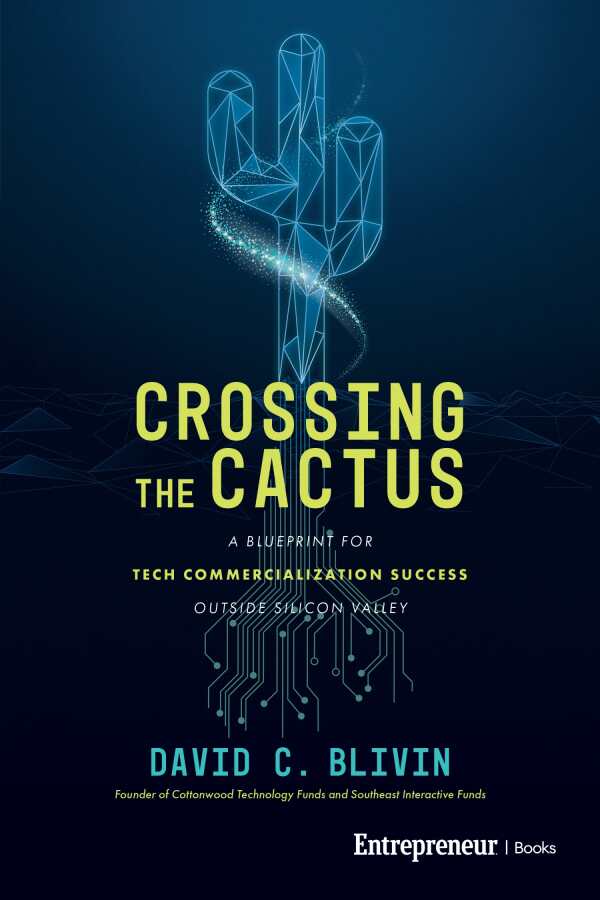Crossing the Cactus
A Blueprint for Tech Commercialization Success Outside Silicon Valley
Crossing the Cactus is a comprehensive technology startup guide that names attainable objectives and reflects multifaceted resolve.
David Blivin’s savvy business guide Crossing the Cactus recommends strategies for technology startups.
Naming “three key ingredients” for establishing a nontraditional entrepreneurial ecosystem, this book draws on Blivin’s investment fund experiences and other industry examples to introduce strategies for technical commercialization. Its methods are outlined in straightforward terms, organized into three complementary sections focused on ideas, people, and money. The first section undertakes a broad examination of all three elements, though, and asserts that starting with only two of three can still allow identification of the third and lead to success. Revealing notes about how much seed capital is needed, and about where to identify and cultivate skilled workers, also appear.
The book’s second part is an indiscriminate review of effective ways to build a technology ecosystem, identifying and encouraging industry clusters or “geographic concentrations of interconnected businesses, suppliers, and institutions” in a specific field. The third section is devoted to technology industry case studies of both successful and failed ventures spanning multiple sectors, if emphasizing hard science innovation to commercialization like semiconductors and hydrogen production. Notes about the health care, agriculture, and film industries also appear, though these are covered in less depth. Indeed, the book is most devoted to promoting emerging technologies in nontraditional regions; one of its underlying key impetuses is emboldening communities’ retention efforts, and it also recommends offering incentives for companies and their workforces to stay local. Those involved in economic development and innovation efforts will be compelled; federal, state, and local government decision-makers, entrepreneurs, investors, university officials, and professors factor into its efforts to encourage business development “outside established centers of innovation tech hubs.”
The prose is plainspoken and reasoned, though some repetition occurs. Supplemental examples and identified strategies appear throughout to good effect, though. For instance, the text argues for executive management expertise as a critical building block; later, this is illustrated in coverage of a new ecosystem’s success factors. Graphics and charts are used to accentuate particular concepts. With its clear enumerations of business strategies and thorough scope, the book proves to be an accessible guide to technology innovation-to-market concepts. While there are some references to outside resources, much of its work is supported by Blivin’s own professional experiences and research.
Crossing the Cactus is an instructive economic development guide that demystifies the processes of building successful technological ecosystems.
Reviewed by
Katy Keffer
Disclosure: This article is not an endorsement, but a review. The publisher of this book provided free copies of the book and paid a small fee to have their book reviewed by a professional reviewer. Foreword Reviews and Clarion Reviews make no guarantee that the publisher will receive a positive review. Foreword Magazine, Inc. is disclosing this in accordance with the Federal Trade Commission’s 16 CFR, Part 255.

